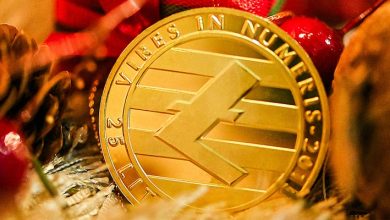What Is Tokenization and How Does It Work on Blockchain?

- Understanding the concept of tokenization
- Exploring the benefits of tokenization on blockchain technology
- The process of token creation and distribution
- Security considerations when using tokens on the blockchain
- Real-world applications of tokenization in various industries
- Challenges and future trends of tokenization in the blockchain space
Understanding the concept of tokenization
Tokenization is a process in which real-world assets or rights are converted into digital tokens on a blockchain. These tokens represent ownership of the underlying asset and can be traded or transferred digitally. This concept has gained popularity in recent years due to its ability to facilitate fractional ownership, increase liquidity, and streamline transactions.
Tokenization works by using smart contracts to create and manage tokens on a blockchain. Smart contracts are self-executing contracts with the terms of the agreement directly written into code. They automatically enforce the rules and obligations of the contract, eliminating the need for intermediaries and reducing the risk of fraud or manipulation.
By tokenizing assets, individuals can invest in a wide range of assets that were previously illiquid or inaccessible, such as real estate, art, or even intellectual property. Tokenization opens up new opportunities for investors to diversify their portfolios and participate in markets that were once reserved for institutional investors.
Overall, tokenization has the potential to revolutionize the way assets are bought, sold, and traded. It provides a more efficient and transparent way to transfer ownership, reduces costs associated with traditional transactions, and democratizes access to investment opportunities. As blockchain technology continues to evolve, tokenization is expected to play a significant role in shaping the future of finance and asset management.
Exploring the benefits of tokenization on blockchain technology
Tokenization on blockchain technology offers a wide range of benefits that can revolutionize various industries. By converting real-world assets into digital tokens, businesses can unlock new opportunities for liquidity, transparency, and security. One of the key advantages of tokenization is its ability to fractionalize ownership, allowing investors to own a fraction of an asset without having to purchase the entire thing.
Moreover, tokenization enables the automation of processes such as trading, settlement, and compliance, reducing the need for intermediaries and streamlining operations. This not only saves time and costs but also minimizes the potential for errors and fraud. Additionally, blockchain technology ensures that transactions are recorded on a secure, immutable ledger, providing a high level of trust and accountability.
Furthermore, tokenization has the potential to democratize access to investment opportunities, allowing a wider range of individuals to participate in markets that were previously out of reach. This can lead to increased financial inclusion and economic empowerment for people around the world. Overall, tokenization on blockchain technology has the power to transform the way assets are bought, sold, and traded, paving the way for a more efficient and inclusive financial ecosystem.
The process of token creation and distribution
The process of creating and distributing tokens on the blockchain involves several key steps. First, a token is created using a smart contract on a blockchain platform such as Ethereum. This smart contract defines the rules and parameters of the token, including its total supply, divisibility, and any special features it may have.
Once the token is created, it can be distributed to users through various means. One common method is through an initial coin offering (ICO), where tokens are sold to investors in exchange for cryptocurrency or fiat currency. Tokens can also be distributed through airdrops, where they are given away for free to holders of a specific cryptocurrency.
After the tokens have been distributed, they can be traded on cryptocurrency exchanges or used within the ecosystem for which they were created. The blockchain ensures that all token transactions are recorded transparently and securely, providing a tamper-proof record of ownership and transfer.
Overall, tokenization on the blockchain offers a new way to create and manage digital assets, enabling a wide range of applications in industries such as finance, gaming, and supply chain management. By leveraging the security and transparency of blockchain technology, tokenization has the potential to revolutionize the way we think about value and ownership in the digital age.
Security considerations when using tokens on the blockchain
When using tokens on the blockchain, it is essential to consider security measures to protect your digital assets. One of the key security considerations is to ensure that you are using a secure wallet to store your tokens. A hardware wallet is often recommended as it provides an extra layer of protection against hacking and theft.
Another important security consideration is to be cautious when sharing your private keys or seed phrases. These are the keys to your digital assets, and anyone who gains access to them can control your tokens. It is crucial to keep this information confidential and never share it with anyone.
Additionally, it is essential to be aware of phishing scams and fraudulent token offerings. Hackers often use fake websites and emails to trick users into revealing their private keys or sending tokens to fake addresses. Always verify the authenticity of websites and double-check the addresses before making any transactions.
Regularly updating your wallet software and following best practices for cybersecurity can help protect your tokens from security threats. By staying informed and taking proactive measures, you can minimize the risk of losing your digital assets to malicious actors on the blockchain.
Real-world applications of tokenization in various industries
Tokenization has various real-world applications across different industries, leveraging the benefits of blockchain technology. Some of the key industries where tokenization is being utilized include:
- Finance: In the finance sector, tokenization is used to represent assets like stocks, bonds, and real estate on the blockchain. This allows for fractional ownership of high-value assets, making them more accessible to a broader range of investors.
- Retail: Retailers are implementing tokenization for loyalty programs and rewards. By tokenizing loyalty points, customers can easily trade or redeem them across different merchants, enhancing customer engagement and loyalty.
- Healthcare: In the healthcare industry, tokenization is used to secure sensitive patient data and streamline processes like insurance claims and medical records management. This helps in ensuring data privacy and integrity.
- Supply Chain: Tokenization is revolutionizing supply chain management by tracking products from manufacturer to consumer. Each product is assigned a unique token that contains information about its origin, authenticity, and journey through the supply chain.
- Art and Collectibles: Tokenization is being used to represent ownership of art pieces, collectibles, and other high-value assets. This enables fractional ownership, making investments in art more liquid and affordable for a wider audience.
Challenges and future trends of tokenization in the blockchain space
The tokenization of assets on the blockchain has brought about numerous benefits, such as increased liquidity, fractional ownership, and enhanced security. However, it also poses several challenges and future trends that need to be addressed for the technology to reach its full potential.
One of the main challenges of tokenization in the blockchain space is regulatory compliance. As governments around the world grapple with how to regulate digital assets, companies involved in tokenization must navigate a complex and ever-changing regulatory landscape. Failure to comply with regulations can result in hefty fines or even legal action, which can hinder the growth of tokenization.
Another challenge is interoperability. As more assets are tokenized on various blockchains, there is a need for standards that allow these tokens to move seamlessly between different platforms. Without interoperability, the full benefits of tokenization, such as increased liquidity and ease of trading, may not be realized.
Looking ahead, one of the future trends in tokenization is the tokenization of real-world assets, such as real estate and art. By tokenizing these traditionally illiquid assets, investors can gain access to new investment opportunities and diversify their portfolios. However, this trend also brings with it challenges, such as valuation and custody issues, that need to be addressed.
Overall, while tokenization in the blockchain space offers numerous benefits, it also presents challenges that must be overcome for the technology to reach its full potential. By addressing issues such as regulatory compliance, interoperability, and the tokenization of real-world assets, the blockchain industry can continue to evolve and revolutionize the way assets are bought, sold, and traded.



